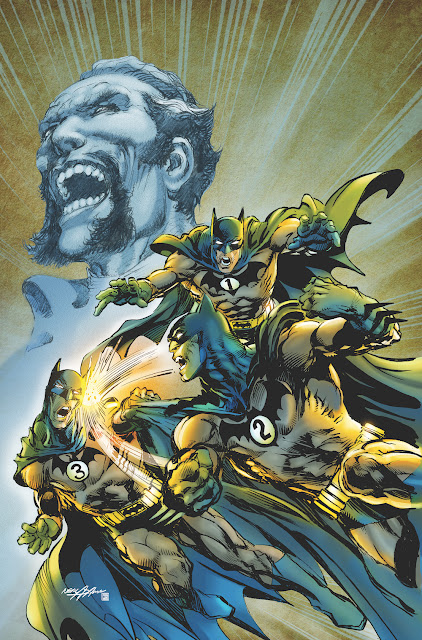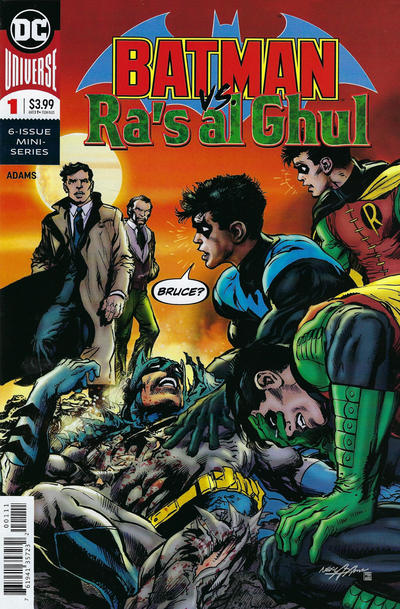Batman Vs. Ra's al Ghul by Neal Adams is one bizarre comic book yarn. This 2019 six-issue extravaganza follows on after the Deadman limited series that Adams created the year before, and Deadman plays a very large role in this strange tale that has the Batman transported to another dimension while a doppleganger takes his place as Bruce Wayne. While the assembled Robins attempt to get to bottom of the mystery, the real Batman and Deadman are fighting for their lives in the distant dimension where they encounter all sorts of magic and such.
Compared to Batman Odyssey this is a relatively easy read, though the first two chapters are exceedingly confusing. I actually thought the book had either missing pages or there had been a printing error. The setting seems to be "No Man's Land", the time when Gotham was cut off from the rest of the world and martial law was necessary. Ra's al Ghul lends his forces to the city to maintain "order" and Batman is vehemently opposed thinking rightly that Ra's al Ghul has another agenda.
The Neal Adams Deadman series and this one are part of the same story, with the cliffhanger ending of the former leading directly into this. For my review of that series check out this link. In that series Boston Brand is searching for brother Aaron Brand who was traded to Ra's al Ghul by his parents in a strange bargain. Aaron has been trained to become Ra's al Ghul's right hand and participates in a funky series of athletic events to determine who will replace Bruce Wayne as Batman. While that goes on Batman himself is held prisoner (sort of) by the other-dimensional witch Chiaroscuro.
I'm not quite sure what Adams was up to with this meandering series which not unlike Batman Odyssey seems to want to confuse the reader as much as possible as the story unfolds. There are disguises and robot dopplegangers and endless reveals which are supposed to shocking but sadly just become tiring before the story finally comes to a conclusion of sorts. Deadman does get something of a happy ending to his travails and I suspect that was what Adams most wanted to do for the character on which he'd cut his teeth at DC. The Demon also gets a short appearance in the story as does the Man-Bat and his bride She-Bat.
The story comes to a complete halt at its climax when we suddenly get a lecture on the benefits of hydrogen power and an explanation of how such power could actually work. Noble, but it seems Adams couldn't keep his preaching out of his storytelling at a critical time. I wish Batman Vs. Ra's al Ghul were better. I wanted it to be better because I have long admired the talent of the late and very great Neal Adams. Adams was an artist who truly changed the industry, first with his style bringing a powerful sense of illustration to a field dominated by cartooning and then by working to see that creators got a fairer share of the benefits from their work. The fact that Batman Vs. Ra's al Ghul is a mediocre comic doesn't mean that Neal Adams wasn't a great man and a great talent.
Here are the issues in this mini-series with logos intact.
See next time. Same Bat-Channel! Different Non-Bat-Month!
Rip Off

















.jpg)










































